

Original Article - Year 2014 - Volume 29 -
Evaluation of the effectiveness of Semmes‑Weinstein monofilaments in assessing abdominal sensitivity
Avaliação da eficácia do uso dos monofilamentos de Semmes-Weinstein para avaliação da sensibilidade abdominal
ABSTRACT
OBJECTIVE: The aim of this study is to evaluate whether Semmes-Weinstein monofilaments could be used to reliably assess the sensitivities of different abdominal wall regions.
METHODS: Semmes-Weinstein monofilaments were used to evaluate skin sensitivity to abdominal pressure in 20 volunteers. The abdominal skin was divided into nine regions. The assessment of skin sensitivity to pressure was carried out three times in each area, with 1 week intervals between measurements.
RESULTS: No significant differences in the pressure threshold were observed when the three measurements in each region were analyzed separately. However, with the Semmes-Weinstein monofilament technique, a statistically significant difference was observed between the values of pressure obtained in each abdominal region.
CONCLUSIONS: Semmes-Weinstein monofilaments are a reliable tool in evaluating abdominal skin sensitivity to pressure. A statistically significant difference was observed between the different areas of the abdominal region with this technique. With the method reported in this study, it was possible to establish a protocol to reduce subjectivity and measure the skin sensitivity to pressure.
Keywords: Abdominal wall/innervation; Hypoesthesia/diagnosis; Pression; Sensory threshold/physiology; Semmes-Weinstein monofilaments
RESUMO
OBJETIVO: O objetivo deste estudo é avaliar se o método de Semmes-Weinstein tem resultados consistentes e verificar se existem diferenças de sensibilidade entre as regiões da parede abdominal.
MÉTODOS: Os monofilamentos de Semmes-Weinstein foram utilizados para avaliar a sensibilidade da pele à pressão abdominal em 20 voluntárias. A pele abdominal foi dividida em nove regiões. A avaliação da sensibilidade cutânea à pressão foi realizada três vezes em cada área, com um intervalo de uma semana entre as medidas.
RESULTADOS: Analisando-se as três medidas em cada área, isoladamente, não houve diferenças significativas no limiar pressórico. No entanto, o método de Semmes-Weinstein mostrou diferença estatisticamente significativa entre os valores pressóricos obtidos de cada região abdominal.
CONCLUSÕES: Os monofilamentos de Semmes-Weinstein são consistentes para avaliar a sensibilidade da pele abdominal à pressão. Notou-se que o método de Semmes-Weinstein mostrou diferença estatisticamente significativa entre as diferentes áreas da região abdominal. Utilizando-se a metodologia do presente estudo, foi possível estabelecer um protocolo para reduzir o aspecto subjetivo, medindo a sensibilidade à pressão.
Palavras-chave: Parede abdominal/inervação; Hipoestesia/diagnóstico; Pressão; Limiar sensorial/fisiologia; Monofilamento de Semmes-Weinstein.
Plastic surgery procedures involving flaps and grafts may cause a reduction or loss of skin sensitivity. Although there are several methods to assess sensitivity changes after surgery, Semmes-Weinstein monofilaments are one of the most commonly used tools in evaluating skin sensitivity to pressure. Few studies have been devoted to evaluating the methods of sensitivity measurement. Therefore, it is possible that some of the tests used in previous studies may cause physicians to incorrectly inform patients about a possible loss of or reduced sensitivity, and about the type of sensitivity loss they may experience. As, after plastic surgery, patients may be exposed to different types of trauma, it is important that they are properly informed about the type and extent of sensitivity loss, both for legal reasons and to help them avoid injury1.
Traditionally, Semmes-Weinstein monofilaments were used to evaluate pressure thresholds2. However, several studies demonstrate the difficulties of obtaining reliable measurements with this method3,4.
OBJECTIVE
In this study, we aim to evaluate the abdominal sensitivity to pressure by using Semmes-Weinstein monofilaments.
METHODS
The studied group included 20 volunteers, all females, healthy, aged between 18 and 24 years (average age, 20.95 years), with a body mass index (BMI) between 18.83 and 24.91 (average BMI, 21.52), who were submitted to the evaluation of abdominal sensitivity to pressure. From this group, we excluded those presenting any kind of prior incision in the abdomen, as well as previous or current cutaneous or systemic pathologies that could interfere with the sensitivity tests.
Sensitivity evaluation
All patients were evaluated by the same examiner in a quiet environment, with the patient in a supine position on a comfortable table and blindfolded.
The abdominal region was divided into nine areas (A, right hypochondrium; B, epigastrium; C, left hypochondrium; D, right flank; E, mesogastrium; F, left flank; G, right iliac fossa; H, hypogastrium; I, left iliac fossa), as illustrated in Figure 1.
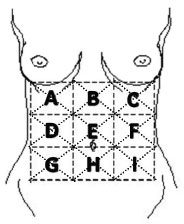
Figure 1. Schematic representation of the evaluated abdominal areas.
Sensitivity to pressure was evaluated in the geometric center of each area, calculated by using the intersection of the diagonals of the rectangles. Each volunteer was evaluated three times by using the Semmes-Weinstein technique, and each test was performed with 1 week intervals. In all tests, the data were considered positive when the patient felt the stimulus, or negative if the patient was unable to feel it. The duration of the sensory stimulation was 5 s. The geometric center of each area was stimulated three times with the same technique.
Semmes-Weinstein monofilament technique
To evaluate the degree of pressure sensitivity, were used six Semmes-Weinstein monofilaments (SORRI Bauru) varying between 50.32 kPa to 2.14 MPa. Each filament was attached to a stick, placed on the skin of each analyzed region, and force was applied to bend the filament. The monofilament was maintained for a period of 5 s. The response was recorded as positive if the patient showed sensitivity. Each area was evaluated three times with 1 week intervals, and the threshold pressures of each area were recorded.
Statistical analysis
To analyze the results, the following statistical tests were applied:
1. Friedman's analysis of variance5 to separately analyze the three measurements carried out in each region with the method described.The level of rejection of the null hypothesis was set between 0.05% and 5%.
2. Friedman's analysis of variance5 to compare the averages of the three measurements obtained in each region with the method studied.
RESULTS
We obtained 540 values of pressure thresholds. The pressure thresholds obtained in each region were compared separately (Table 1). No statistically significant difference was observed between the three measurements that were carried out in each area (Table 1), except for region H. The coefficient of variation was separately obtained for each area, and the Semmes-Weinstein technique showed a significant variation (Table 1).
When the average values obtained in each area were compared between the regions of the abdomen evaluated, the use of Semmes-Weinstein monofilaments showed a statistically significant difference between these areas (Table 2). Regions A and B were more sensitive to pressure than regions G and I; region H proved to be more sensitive to pressure than region G; and regions F and H were more sensitive than region I (Figure 2). The results are shown in Tables 1 and 2.
No statistically significant difference was observed between the average values of symmetrical areas (A × C; D × E; G × I) (Figure 3).
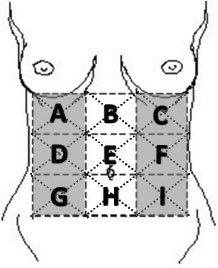
Figure 3. Comparison of skin sensitivity between abdominal symmetrical areas by using a gray scale.
DISCUSSION
The literature presents few studies on methods for measuring skin sensitivity to pressure. In 1898, von Frey6 introduced a method for evaluating sensitivity to pressure that consists of monofilaments of different thicknesses and hardness. The filament was slowly located on the place until it bends. The response obtained was considered positive when the patient felt the pressure of the filament on the skin. Then, Weinstein7 improved this technique by using only nylon monofilaments of different thicknesses, replacing the natural filaments used by von Frey.
In this study, we evaluated the sensitivity to abdominal pressure by performing tests with Semmes-Weinstein monofilaments. Twenty young and healthy volunteers were included. This cohort was selected because several studies, e.g., the work published by Thornbury et al. in 19818, point out significant differences in skin sensitivity between different age groups, caused by age-related changes in skin properties. All volunteers presenting current and/or previous pathological conditions that could interfere with the skin sensitivity tests were excluded from the analysis. The abdominal region was divided into nine areas. Each test was applied three times on each patient. The measurements in each area were randomly carried out on different days to reduce possible measurement errors due to synaptic fatigue and short-term memory. The sensory stimulation period was 5 s for each measurement, as suggested by van Vliet et al.9. The pressure threshold increases with the contact time, due to the response pattern and dynamic adaptation of mechanoreceptors to the pressure stimulus. The volunteers were isolated from external contacts to avoid the interference of environmental stimuli that could distract them.
Three measurements were performed in each area and were separately analyzed. Between the three measurements, no statistically significant difference (p < 0.05) was observed, except in region H, and justified by the random error distribution of the measurements that were carried out.
The average of the three measurements was used to compare the pressure threshold between the regions. This study showed statistically significant differences between the regions. Regions A and B showed lower pressure thresholds than did regions G and I; region G showed an increased pressure threshold when compared with region H; and regions F and H exhibited lower pressure thresholds than did region I.
Although the Weinstein technique is the most commonly used method to assess skin sensitivity to pressure, several studies emphasize the difficulties in obtaining reliable measurements with this method. No uniformity between the data obtained from similar studies was found when evaluating the same region. There are two studies assessing breast sensitivity in healthy patients; however, their results were divergent from each other. By using Semmes-Weinstein monofilaments, Terzis et al.10 evaluated the sensitivity to pressure of 11 healthy persons by using different coordinates: on the nipple, areola, and breast body. In a similar study, Gonzalez et al.11 evaluated the sensitivity to pressure of the areola and nipple in six healthy persons. Slezak et al.2 applied a similar method in 10 healthy persons. Although these studies were similar, Terzis et al.10 obtained an average value of 3.382 g/mm2 for the nipple and of 3.761 g/mm2 for the areola, contrarily to 12.1 g/mm2 and 16.1 g/mm2 obtained by Gonzales et al.11 and 69.1 g/mm2 and 31.6 g/mm2 obtained by Slezak et al.2, respectively.
In all regions analyzed in this study, relatively high standard deviations were observed when compared with average pressure thresholds obtained in each region. Slezak et al.2 observed a similar behavior to that found in this study concerning the values of sensitivity to pressure that were obtained with Semmes-Weinstein monofilaments. Spear et al.12 investigated the sensitivity to abdominal pressure in healthy persons and after breast reconstruction with TRAM, by using monofilaments. The abdomen was divided into 12 regions, and average pressure values were obtained in each region, varying from 5.96 to 11.98 g/mm2, with standard deviation between 1.51 and 2.47 g/mm2. In this study, the interval between the averages of each region was similar to the data published by Spear et al.12. However, lower standard deviations and average values were observed in each region in Spear et al.'s study, a difference that could be due to the sample size. Whereas Spear et al. evaluated 10 volunteers, we evaluated 20 subjects and performed three measurements in each region per volunteer.
McGill et al.4 showed that the physical characteristics of different monofilaments may affect their accuracy. In this study, we evaluated two monofilaments produced by different manufacturers: one monofilament showed an average of 6.8 g, standard deviation of 4.1 g, and coefficient of variation of 29.1%, whereas the other gave values of 7.2 g, 5.6 g, and 4.9%, respectively.
Levin et al.3 evaluated the engineering and mechanical properties of Semmes-Weinstein monofilaments. They3 demonstrated possible measurement errors caused by changes in the placement of the monofilament, leading to inconsistencies in the force applied. This variation can occur when measuring the final value of pressure with different deflections to which the Semmes-Weinstein monofilament can be submitted. Therefore, the final value of pressure varies according to the elastic modulus of the material and the variation in height, which is induced in the monofilament when it is applied to a surface, and the variation of deflections rays that occur when applying the monofilament.
Several studies used other methods to evaluate abdominal sensitivity, including the method of Farah et al.13 and the pressure specified sensory device (PSSD)14. Farah et al. developed a method to evaluate the pressure threshold of abdominal skin after abdominoplasty procedures, by using different weights and the same contact area on the skin. The results of this study showed an average pressure threshold between 0.5 and 0.6 g/mm2 in the abdomen, which was considered as the control (preoperative) for the group, with no significant difference between abdominal areas. PSSD is a method for evaluating skin sensitivity to pressure that consists of a computer system connected to a pressure transducer. A bell is given to the patients for them to ring as soon as they sense the pressure limit; then, the value of pressure threshold is recorded in g/mm2. Fels et al.15 used the PSSD test to assess skin sensitivity to abdominal pressure after abdominoplasty procedures. The results of this study showed an average pressure threshold between 1 and 1.2 g/mm2, with no statistically significant difference between abdominal areas.
With the method of this study, it was possible to establish a protocol to reduce subjectivity and measure skin sensitivity to pressure, at three different times with 1 week intervals, thus reducing the influence of short-term memory and synaptic fatigue.
In the future, a study comparing the different methods for evaluating skin sensitivity to pressure, e.g., PSSD and the Farah test, should be performed. Therefore, implementation of a method for evaluating abdominal sensitivity to pressure that is capable of setting normal pressure limits would be necessary.
CONCLUSION
In conclusion, the Semmes-Weinstein monofilament technique is a reliable method to assess abdominal skin sensitivity to pressure. By using this method, different sensitivities to pressure, depending on the evaluated abdominal area, were obtained. It is important to establish accurate methods to measure skin sensitivity that would allow the surgeon to better inform patients who will be submitted to abdominal surgery. This may also aid physicians in forensic cases.
REFERENCES
1. da Silva DB, Nahas FX, Bussolaro RA, de Brito MJ, Ferreira LM. The increasing growth of plastic surgery lawsuits in Brazil. Aesthetic Plast Surg. 2010;34(4):541-2. http://dx.doi.org/10.1007/s00266-009-9460-7. PMid:20464397
2. Slezak S, McGibbon B, Dellon AL. The sensational transverse rectus abdominis musculocutaneous (TRAM) flap: return of sensibility after TRAM breast reconstruction. Ann Plast Surg. 1992;28(3):210-7. http://dx.doi.org/10.1097/00000637-199203000-00004. PMid:1575422
3. Levin S, Pearsall G, Ruderman RJ. Von Frey's method of measuring pressure sensibility in the hand: an engineering analysis of the Weinstein-Semmes pressure aesthesiometer. J Hand Surg Am. 1978;3(3):211-6. http://dx.doi.org/10.1016/S0363-5023(78)80084-7. PMid:659817
4. McGill M, Molyneaux L, Yue DK. Use of the Semmes-Weinstein 5.07/10 gram monofilament: the long and the short of it. Diabet Med. 1998;15(7):615-7. http://dx.doi.org/10.1002/(SICI)1096-9136(199807)15:7<615::AID-DIA641>3.0.CO;2-P. PMid:9686703
5. Siegel S, Castellan NJ Jr. Nonparametric statistics. 2nd ed. New York: McGraw-Hill; 1998. 399 p.
6. von Frey M. Verspatete Schmerzempfindungen. Z Gesamte Neurol Psychiatr. 1922;79(1):324-33. http://dx.doi.org/10.1007/BF02878457.
7. Weinstein S. Tactile sensitivity of the phalanges. Percept Mot Skills. 1962;14(3):351-4. http://dx.doi.org/10.2466/pms.1962.14.3.351. PMid:14005773
8. Thornbury JM, Mistretta CM. Tactile sensitivity as a function of age. J Gerontol. 1981;36(1):34-9. http://dx.doi.org/10.1093/geronj/36.1.34. PMid:7451834
9. van Vliet D, Novak CB, Mackinnon SE. Duration of contact time alters cutaneous pressure threshold measurements. Ann Plast Surg. 1993;31(4):335-9. http://dx.doi.org/10.1097/00000637-199310000-00010. PMid:8239434
10. Terzis JK, Vincent MP, Wilkins LM, Rutledge K, Deane LM. Breast sensibility: a neurophysiological appraisal in the normal breast. Ann Plast Surg. 1987;19(4):318-22. http://dx.doi.org/10.1097/00000637-198710000-00004. PMid:3688778
11. Gonzalez F, Brown FE, Gold ME, Walton RL, Shafer B. Preoperative and postoperative nipple-areola sensibility in patients undergoing reduction mammaplasty. Plast Reconstr Surg. 1993;92(5):809-14, discussion 815-8. http://dx.doi.org/10.1097/00006534-199392050-00005. PMid:8415962
12. Spear SL, Hess CL, Elmaraghy MW. Evaluation of abdominal sensibility after TRAM flap breast reconstruction. Plast Reconstr Surg. 2000;106(6):1300-4. http://dx.doi.org/10.1097/00006534-200011000-00010. PMid:11083559
13. Farah AB, Nahas FX, Ferreira LM, Mendes JA, Juliano Y. Sensibility of the abdomen after abdominoplasty. Plast Reconstr Surg. 2004;114(2):577-82, discussion 583. http://dx.doi.org/10.1097/01.PRS.0000128356.93462.7B. PMid:15277836
14. Dellon A, Keller K. Computer-assisted quantitative sensoriomotor testing in patients with carpal and cubital tunel syndrome. Ann Plast Surg. 1997;38(5):493-502. http://dx.doi.org/10.1097/00000637-199705000-00009. PMid:9160131
15. Fels KW, Cunha MS, Sturtz GP, Gemperli R, Ferreira MC. Evaluation of cutaneous abdominal wall sensibility after abdominoplasty. Aesthetic Plast Surg. 2005;29(2):78-82. http://dx.doi.org/10.1007/s00266-004-0078-5. PMid:15759089
1. Specialist Member of the Brazilian Society of Plastic Surgery (BSPS), Plastic Surgery, São Paulo, SP, Brazil
2. Associated Professor at the Federal University of São Paulo (UNIFESP/EPM), Titular Member of the Brazilian Society of Plastic Surgery (BSPS), Professor Supervising Master and PhD Theses and Associate Professor at the Federal University of São Paulo (UNIFESP/EPM), São Paulo, SP, Brazil
3. Master in Plastic Surgery from the Federal University of São Paulo (UNIFESP/EPM), Titular Member of the Brazilian Society of Plastic Surgery (BSPS), Plastic Surgery Physician at the Brazilian Institute of Plastic Surgery, São Paulo, SP, Brazil
4. Full Professor of the Public Health Course at the Faculty of Medicine of the University of Santo Amaro, São Paulo, SP, Brazil
5. Full Professor of the Plastic Surgery Course at the Federal University of São Paulo (UNIFESP), São Paulo, SP, Brazil
Institution: Study performed at the Federal University of São Paulo, São Paulo, SP, Brazil.
Corresponding author
Viviane de Andrade Figueira Pinto Coelho
DERMA Simis
Rua Moreira César, 29 - Centro
Sorocaba, SP, Brazil CEP 18010-010
Phone: +55 (15) 3232-8929
E-mail: viviane.coelho@gmail.com
Article received: November 22, 2013.
Article accepted: August 3, 2014.


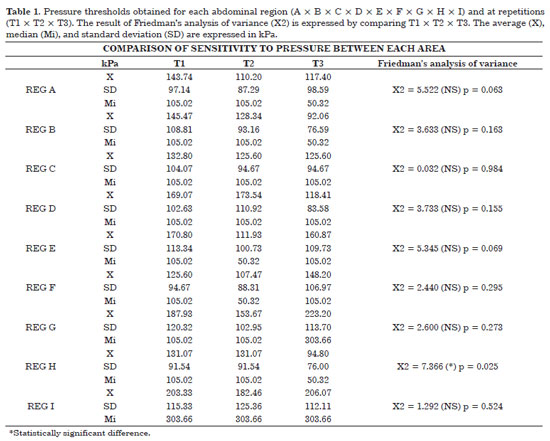
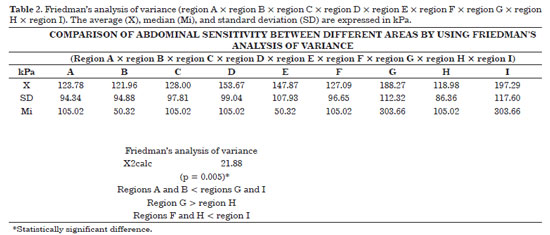
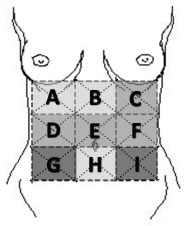
 Read in Portuguese
Read in Portuguese
 Read in English
Read in English
 PDF PT
PDF PT
 Print
Print
 Send this article by email
Send this article by email
 How to Cite
How to Cite
 Mendeley
Mendeley
 Pocket
Pocket
 Twitter
Twitter